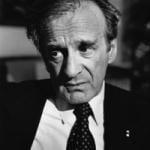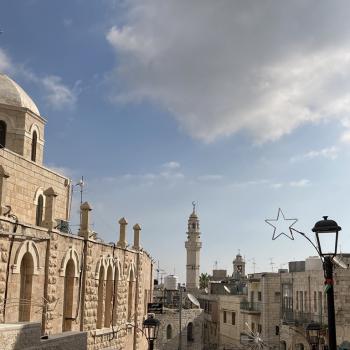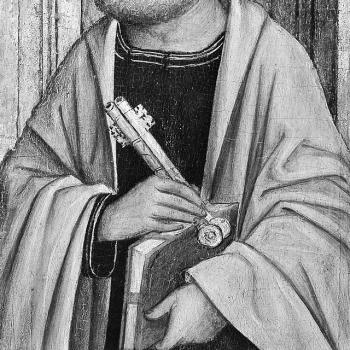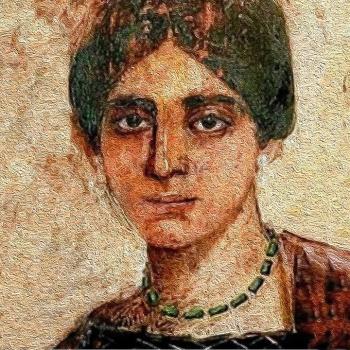On Wednesday morning, May 11, Al Jazeera journalist, Shireen Abu Akleh, who was covering an Israeli military raid on the West Bank, was killed by an Israeli soldier. According to witnesses, the shooter targeted her with full knowledge of her identity. Her murder and the violence that erupted during her funeral received significant news coverage and well-deserved expressions of indignation all over the world.
But these events are only the most recent example of the continued weight of the history of Jerusalem and the surrounding region. If you have not been following the news in the region regularly, or even if you have been following the news, you may be wondering why the conflict only seems to have intensified yet again of late. And, perhaps, you may not be aware of the extent to which the historical baggage, going back at least three thousand years, has bearing on current events.
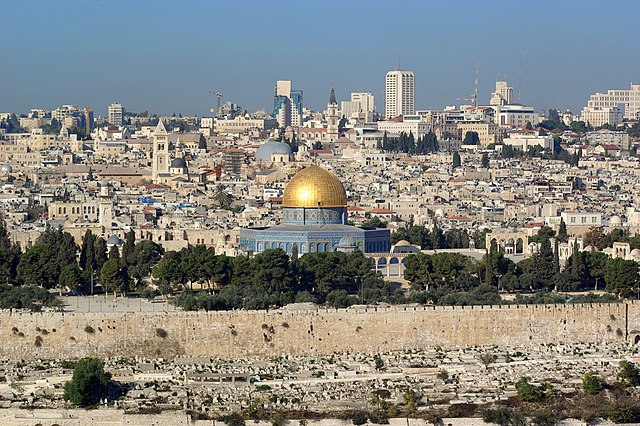
If this describes you, you are in good company. I am an academic specializing in ancient history. Furthermore, I spent five years living in Israel in my adolescence (1991-1996), and am a dual citizen of Israel and the US. And yet, I am still struggling to understand. In fact, on May 11th, I was reading the memoir of Sari Nusseibeh, a prominent Palestinian intellectual, in preparation for a class on Jerusalem that I will be teaching this summer, when Katherine Blouin, a scholar who specializes in the histories of the marginalized in Ancient Egypt, and has spent her career fighting for justice in the field of classics through her academic scholarship and her blog, Everyday Orientalism, told me about Abu Akleh’s murder.
How do we understand the deliberate targeting of a journalist? And how do we react in a way that seeks justice for the oppressed and mourns with those who mourn? Living in Israel right after the Gulf War and towards the end of the first intifada, much of the official narrative I heard on the news and at school was an “us” vs. “them” story, with justice and the right to self-defense being portrayed as solely the prerogative of the Israelis.
After all, monthly bomb shelter drills were still the norm in my elementary school. In the process, all Palestinians were identified with fringe terrorist groups, to the point that is seemed that there were no “regular” people among them. But there was also a temporary sense of hope. In 1994, PLO’s Yassir Arafat shared the Nobel Peace Prize with the Israeli leaders Shimon Peres and Yitzhak Rabin for their work on the Oslo Accords, which seemed to promise longer-term peace. But their work did not make a lasting impact, and in 1995, an Israeli right-wing extremist opposed the Oslo Accords assassinated Rabin.
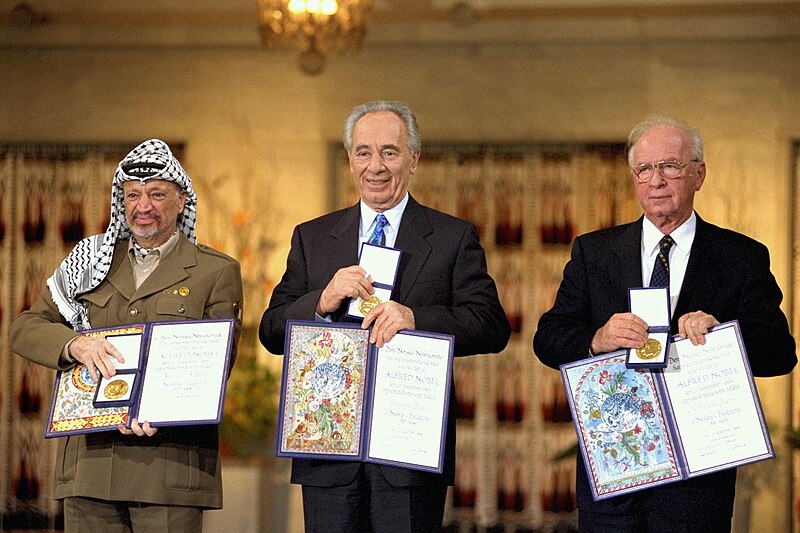
As a professional historian now, and with the benefit of geographic distance as an American academic, I see that the story is significantly more complex than most of us can imagine. While we can and should decry the violence and terrorism of groups like Hamas against Israelis, we must recognize the suffering of the millions of people trying to live lives under Israeli oppression and occupation. Some of these people, including Palestinian Christians, have been driven out of their ancestral homes in 1948, and will never return. Their stories are undeniably heartbreaking.
What can we do? We can start by trying to understand the historical baggage that affects the different and irreconcilable positions that many of those living in the region or thinking about it – including American evangelicals – hold. And so, what follows are some helpful starter resources about the history of the region from antiquity to the present, with a special focus on the contested space that is the city of Jerusalem, in particular. The battle over possession of Jerusalem, the holy city, has been, at least in part, the reason for the repeated failure of the two-state solution – the possibility of dividing the territory currently under the control of Israel into two states, one Jewish and one Palestinian.
Any list like this one is invariably subjective, and reflects the interests of the curator. Nevertheless, the sources included here represent a wide range of perspectives, and some of them directly engage each other. It is this dialogue, ultimately, that makes them particularly useful.
Perhaps the best place to start is by reading memoirs of deeply thoughtful people whose personal experiences reveal to us the different sides of the traumas inherent in the Arab-Israeli conflict in Jerusalem. And so, I recommend reading the memoirs of two men who grew up in Jerusalem, just feet from each other: Amos Oz, one of Israel’s most celebrated writers, and Sari Nusseibeh, the scion of one of Arab Jerusalem’s most distinguished intellectual and political dynasties.
Oz’s A Tale of Love and Darkness puts on emotionally charged display the dislocated experience of European Jews during the intensification of persecutions before the Holocaust, and their continued sense of dislocation long after the founding of Israel. For Oz and his parents and grandparents, life in Jerusalem was always a reminder of the life they could not have in Eastern Europe, and the murdered relatives who stayed behind.
Responding directly to Oz, Nusseibeh’s Once Upon a Country: A Palestinian Life showcases the tragic results of the founding of Israel for Arab families who have lived, as in the case of his own family, in Jerusalem since the seventh century CE. His entire life has been one of fighting to preserve the heritage of his people, and give them dignity in the face of deliberate and brutal oppression from Israel. Both of these memoirs are raw, emotional, and hopeless. The truth, it appears, is not that one side is right and the other is wrong.
I would add to these a third memoir, one less centered on Jerusalem, and more on the politics of the region at large. Hanan Ashrawi’s This Side of Peace: A Personal Account revolves around its author’s efforts to build bridges and bring peace. Yet her strong voice as a Palestinian-Christian woman provides a highly valuable perspective that is otherwise absent from the memoirs of Oz and Nusseibeh, who are respectively a secular Jew and a progressive Muslim.
The curious reader’s next stop, or maybe even an alternative starting point, could be one journalist’s account of the street that became No Man’s Land in the divided city of Jerusalem in 1948. Dion Nissenbaum’s A Street Divided: Stories from Jerusalem’s Alley of God is a masterful and highly readable account of the history of real people living on two sides of the barbed wire that marked a boundary on their street, dividing Israel from Jordan, and Jews from Muslims.
To give an example of just one story, in 1956 the UN negotiated a highly contentious cease-fire on the street. The reason? Searching for the dentures of a cancer patient at the French hospital on the street. The patient accidentally knocked her dentures out of her open window, and they landed in No Man’s Land. The nuns running the hospital were determined to assist their patient, and brokered the remarkable cease-fire that allowed them to complete this mission successfully. This minor event highlights the fragility and difficulty of civilian life on this border in the middle of a residential street over the years. Even dentures could cause an international incident.
With the heavy baggage of recent life in Jerusalem for both Arabs and Israelis on full display through these memoirs and journalistic writings, I would recommend going back to the beginning – or as close to it as possible. The Bible is a fantastic primary source for the early history of the city. In addition, a great basic textbook that situates Jerusalem and Israel in its historical and theological context is A Biblical History of Israel by Iain Provan, V. Philips Long, and Tremper Longman III. Caveat lector: this book is not easy-breezy summer reading, but it is packed with useful information and is written by three excellent evangelical scholars. Caffeinate appropriately.
For a textbook history of Jerusalem specifically see Eric Cline’s very readable Jerusalem Besieged: From Ancient Canaan to Modern Israel. Cline is a prolific public archaeologist, and his work is worth reading. Another of his works, Digging Up Armageddon: The Search for the Lost City of Solomon, is a must-read for every Biblical archaeology aficionado.
The clash with the Romans that ultimately resulted in the destruction of the Temple and the sack of Jerusalem by Titus in 70 CE is an important piece of the story of Jerusalem in antiquity. One of the best accounts of this conflict is Martin Goodman’s Rome and Jerusalem: A Clash of Civilizations. In addition, covering a site outside Jerusalem, but from that same clash with the Romans, Jodi Magness’ Masada: From Jewish Fortress to Modern Myth is riveting.
Magness addresses both modern Israel’s and modern evangelicals’ obsession with the story of Masada, the site of the dramatic last stand of the Jews against the Romans. Everyone loves a tragic underdog, but just as with the other famous tragic underdog, the Spartans at Thermopylae, the glorification of such stories tends to lead to problematic abuses of history.
By the way, did you know that during Donald Trump’s visit to Israel and Jerusalem in 2017, he was scheduled to visit Masada? But the site required a lot more hiking than he was prepared to undertake, so it didn’t work out at the end. On a side note, Magness has published extensively on biblical archaeology and history, and is currently at work on a book specifically about the history and archaeology of Jerusalem. Honestly, I am quite excited about it.
In the meanwhile, though, another important book for every list is Simon Goldhill’s Jerusalem: City of Longing. This book is effectively a walking tour of Jerusalem, but one that seamlessly integrates a modern tour of the city’s sites with its historical baggage. And that baggage is, ultimately, one of the conflicting religious traditions hiding in every place. Jerusalem truly is, as the title states, the city of longing.
This list would not be complete without mentioning Andrew Lawler’s Under Jerusalem: The Buried History of the World’s Most Contested City. Lawler tells the scandalous stories of excavations under Jerusalem over the past century and a half by Christian, Jewish, and secular archaeologists, both amateurs and professionals. What emerges is a different side of the Arab-Israeli conflict, but one with significance for American evangelical Christians too: while Jews and Christians have placed significant value on excavating the city underneath in order to reinforce their historical claims to Jerusalem and test/confirm the stories in the Bible through archaeology, for modern Arab residents of the city, their focus has been, rather, on valuing the city aboveground more than the one underneath.
Ultimately, Lawler shows that archaeology in Jerusalem has repeatedly turned contentious and political, because in Jerusalem the past can never be separated from the present. Every piece of dust in Jerusalem, above ground or below, is political and can spark conflict between different constituents with the least provocation.
Lest we end on a note of despair, though, I will conclude by recommending a fascinating project that is partly historical but mostly gastronomical: The Jerusalem Cookbook by Yotam Ottolenghi and Sami Tamimi. Two celebrated chefs currently based in London, they grew up on the West and East sides of Jerusalem respectively.
The collaboration of an Israeli-Italian Jew and a Palestinian Arab to produce a cookbook of traditional foods that they associate with Jerusalem highlights one fundamental aspect of life that has been bringing people together for millennia – sharing a table. Because, in a world and a city where no one can agree about ownership, it is possible at least to agree that “Food is a basic hedonistic pleasure, a sensual instinct we all share and revel in. It is a shame to spoil it.” Pass the hummus.



